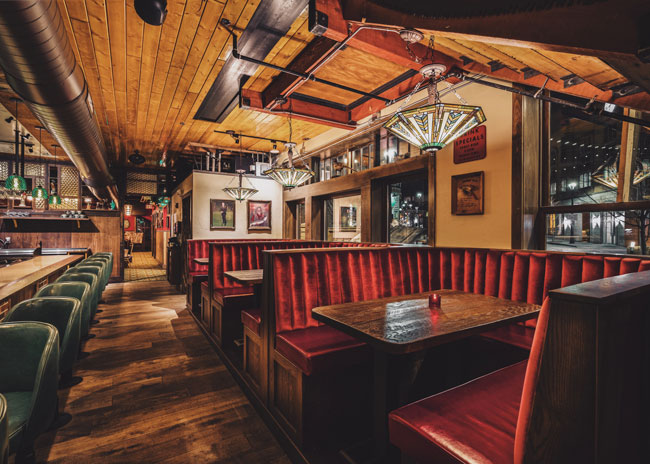"Authentic” and “natural” are big buzzwords driving restaurant concepts and design today. Brands attach them to their menus, ingredients, cooking styles and, increasingly, designs. Grace Jeffers, who for the past 20 years has researched, wrote about and lectured on the history of materials, argues that sentimentality for supposedly “real” materials such as wood, stone and leather is often misplaced.
 Grace Jeffers Artist, Writer, Designer, Materials Specialist www.gracejeffers.comrd+d: You’re an advocate for “man-made natural” materials. What has led you to embrace products that many categorize as fake, and thus less desirable, over authentic?
Grace Jeffers Artist, Writer, Designer, Materials Specialist www.gracejeffers.comrd+d: You’re an advocate for “man-made natural” materials. What has led you to embrace products that many categorize as fake, and thus less desirable, over authentic?
GJ: If you look at the history of the man-made environment, humans have been imitating materials that appear in nature from the beginning of civilization. It exists for a reason. So the big question is, why do we hate fake? In my work, I ask people to really question and examine what natural is. In reality, much of what is considered natural — such as trees that are hybridized in a lab and grown on tree plantations — isn’t. Humans have changed it. And many so-called natural materials are nonrenewable. Yes, trees are a renewable resource, but forests aren’t. Once you cut a forest down, it’s gone, and the habitat it sustained will never be the same. You’ve put something else there. That’s nature? My reason for doing this, in part, is to give designers better tools to make more conscious decisions about the materials they choose.
rd+d: Synthetic seems to inherently imply anti-green. Not so?
GF: A lot of us go through life thinking that synthetic materials are a big part of the problem in the world today, that if you want to go green and design sustainably, you should embrace natural over synthetic materials. That’s simply not true. I’m not advocating it in every case, but synthetic materials can absolutely offer a solid strategy for making environmentally responsible choices.
rd+d: Are there particular products you feel are better sourced man-made as opposed to natural?
GF: One is laminates that imitate exotic wood species. I was looking at one a couple of years ago and asked the manufacturer’s rep if he knew the story behind this particular tree in the wild. (He didn’t.) Demand for that species, teak, has made it one of the most endangered, and it is the wood equivalent of blood diamonds. Everyone knows that tigers and rhinos are endangered, but few are aware that many wood species are similarly endangered. When Prada did the build-out of their flagship store in SoHo in zebrawood, it was analogous to if they’d upholstered the interior of the store in tiger skin. There are also a lot of woods that are illegally logged. Those are all big issues to know about when you’re specifying natural woods. Why not use synthetic as a stand-in for the real thing in such cases — especially in environments such as restaurants, where key issues are durability and aesthetics? A lot of natural materials don’t give you the durability you need, and from an aesthetic standpoint, there’s now an almost imperceptible difference between many natural and synthetic products.
rd+d: Where can designers and buyers get information on wood and other natural products that are endangered?
GF: The best resource is the CITES list (www.CITES.org). It’s a list, governed by the United Nations, of all the endangered flora and fauna species in the world.



